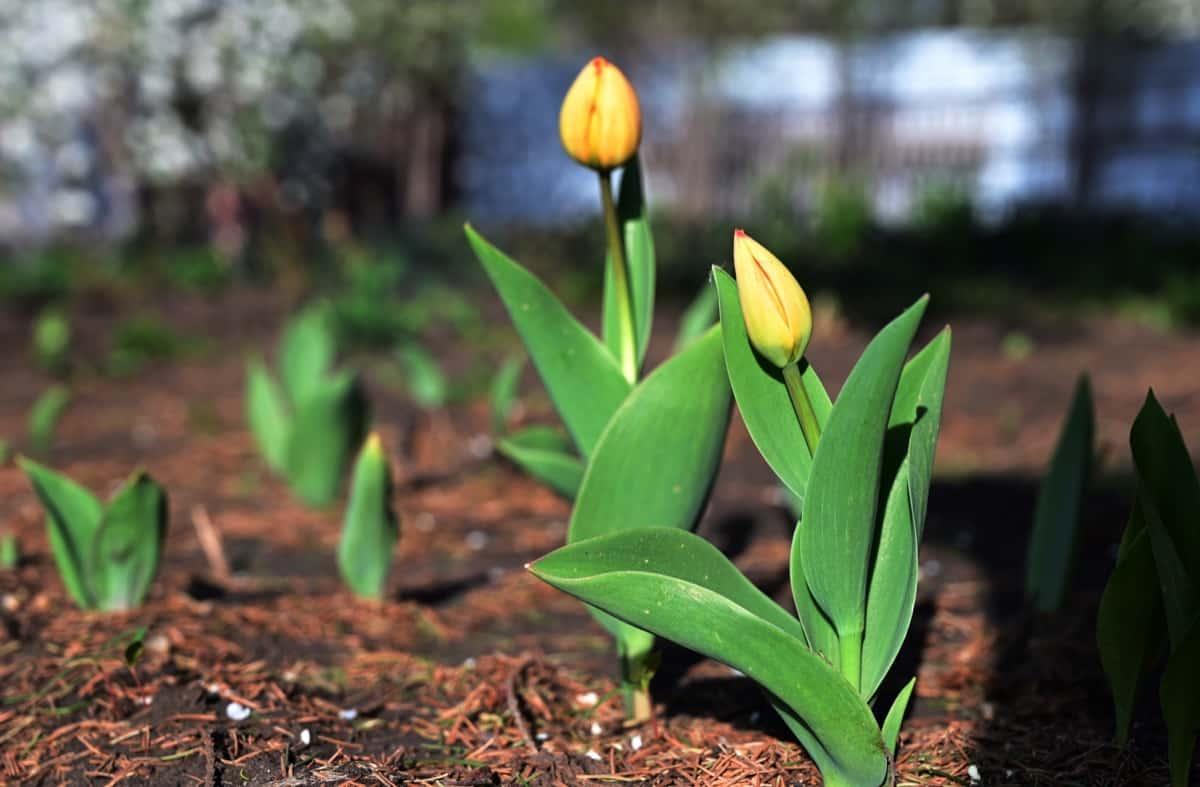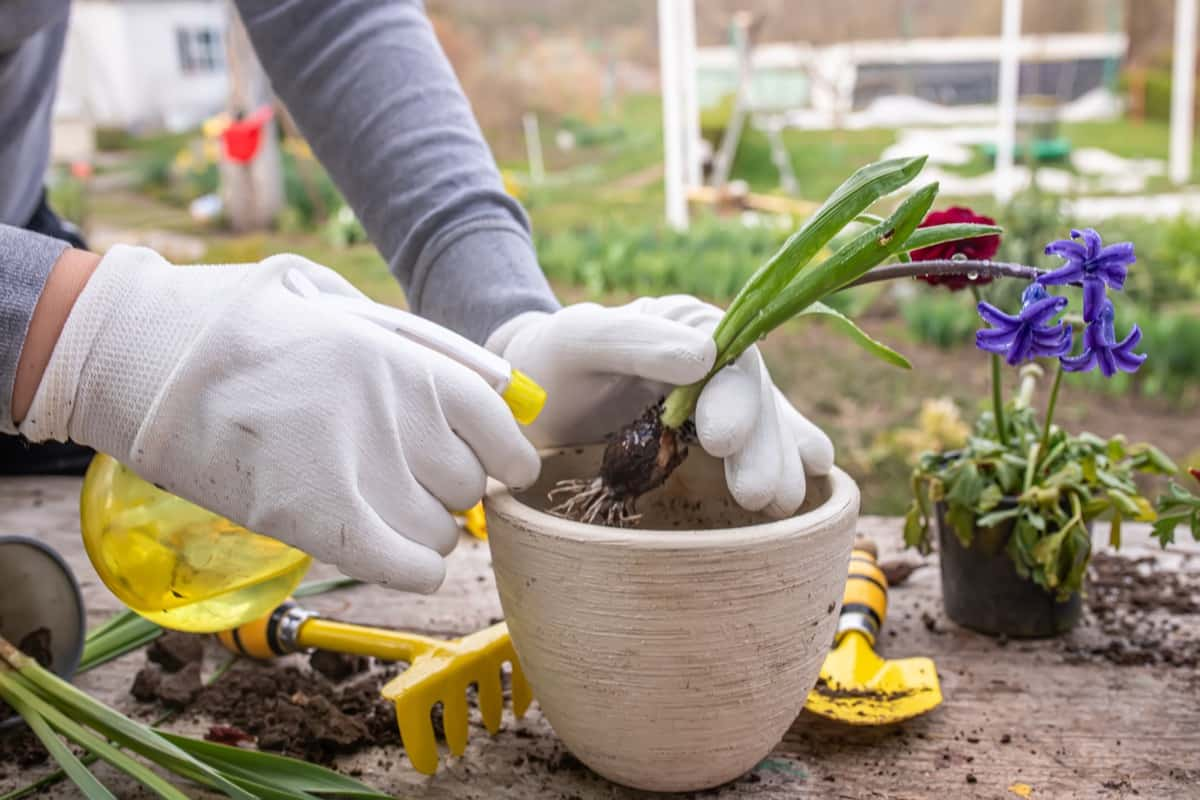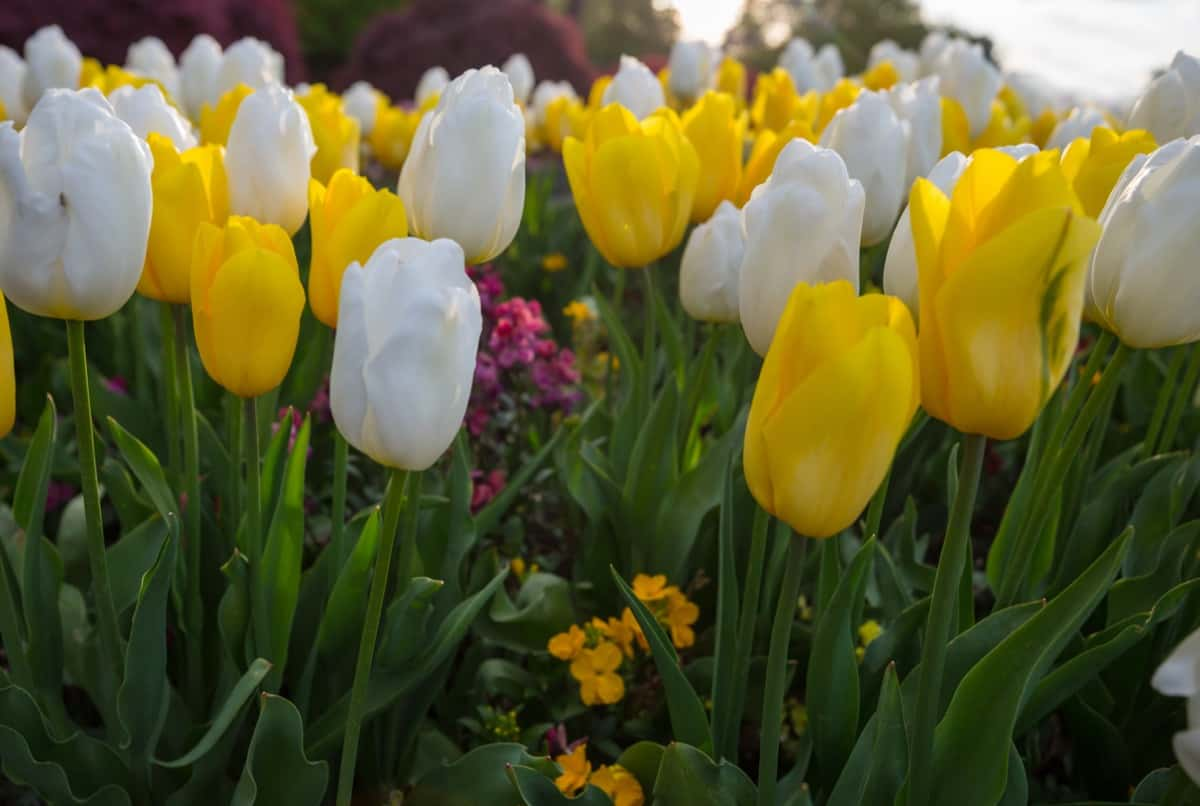Among spring’s most cherished harbingers, Tulips are renowned for their striking colors, intricate shapes, and compelling allure. They are a testament to the rejuvenating power of nature, and their cultivation demands meticulous care and an understanding of their nutritional needs. Achieving the optimal bloom and vitality of tulips depends significantly on the appropriate selection and application of fertilizers.

Best Fertilizer for Tulips
When and How to Apply Fertilizer to Tulips
The timing of fertilizer application is crucial in nurturing tulips. Their distinctive growth cycle requires that nutrients be administered at two crucial junctures. The first is in the fall, at planting time, and the second is in the spring when the foliage emerges but before the bloom. Fall application primes the bulbs for robust root development during the winter, setting the stage for vigorous growth in the spring.
A slow-release fertilizer high in phosphorus is recommended to support root growth. As the season of renewal unfolds, and the tulips start peeking through the earth’s blanket, nourishing them once more with a second helping of fertilizer is advised. At this stage, tulips benefit from a balanced fertilizer supporting leaf, stem, and flower development. The application process of fertilizer is simple but must be done with care.
Always follow the manufacturer’s instructions on the package for the exact amount. When it comes to fertilizing tulips, remember this helpful tip: gently scatter the fertilizer near the bottom of the plant, making sure not to touch the leaves directly so they don’t get harmed. Once you’re done, give the tulip a good watering to help the nutrients soak into the soil and find their way to the roots.
Best Synthetic and Organic Fertilizers for Tulips with NPK Ratios
When choosing a fertilizer, the nitrogen, phosphorus, and potassium (NPK) content is crucial. These three elements are fundamental to plant growth and are represented by three numbers on fertilizer packages, respectively. For the fall application, consider using a fertilizer with a high middle number, which represents phosphorus. An NPK ratio of 5-10-5 or 10-20-20 would be suitable as it will help promote robust root growth. In the spring, a balanced fertilizer is the best choice. Look for a fertilizer with an equal NPK ratio, like 10-10-10 or 20-20-20.
This will provide the tulip with a balanced supply of nutrients for overall growth and blooming. When it comes to synthetic versus organic fertilizers, both have their advantages. Synthetic fertilizers are usually cheaper, more readily available, and provide immediate plant nutrition. On the other hand, organic fertilizers tend to be more expensive but provide a slow, steady release of nutrients and improve soil health over time. Good options for organic fertilizers include bone meal, fish emulsion, and composted manure.
Fertilizing Tulips in Spring
When spring arrives and the tulip foliage starts to emerge, it’s time for the second round of fertilization. At this stage, a balanced fertilizer that provides all essential nutrients in equal amounts is ideal. This will support the healthy development of leaves, stems, and flowers. As we discussed before, when using fertilizer, make sure to sprinkle it near the plant’s roots, being cautious to avoid any contact with the leaves and stems. Water well after application to help the nutrients penetrate the soil and reach the bulb.
In case you missed it: 10-10-10 Fertilizer: How to Use in Your Home Garden

Home-Made Fertilizers for Tulips
For gardeners who prefer a more natural approach to tulip cultivation, homemade fertilizers can be an effective and sustainable option. Compost is a fantastic choice for providing a broad spectrum of nutrients. You can create your very own soil booster right in your kitchen using leftovers like fruit peels, vegetable scraps, coffee grounds, and eggshells. This, known as compost, not only nourishes plants but also enhances the quality of the soil and supports helpful microbes.
Alternatively, you can make a special fertilizer from banana peels. By drying and grinding them into a powder, you can enrich the soil around your tulips with potassium, giving them an extra boost. This slow-release fertilizer will enhance the plant’s overall health and aid in flower production. Eggshells are another excellent resource for homemade fertilizer. Rich in calcium, they can help replenish this essential nutrient in the soil. Simply rinse and dry the eggshells, then grind them into a fine powder. This can be mixed into the soil or sprinkled around established plants at planting time.
Monitoring Your Tulips’ Health
After applying the right fertilizer at the appropriate times, it is also essential to consistently monitor your tulips’ health. Keep an eye out for clues of nutrient shortage, like leaves turning yellow or plants not growing as expected. These signs could tell you that it’s time to give them extra nourishment through fertilization. Conversely, over-fertilization can lead to lush foliage but poor blooming or even damage to the plant, so be wary of adding too much.
Adjusting Fertilizer Application as Needed
Don’t hesitate to adjust your fertilizer application if you notice signs of nutrient deficiency or excess. Gardeners often need to experiment a bit to find the right balance, as the nutritional needs of plants can vary depending on soil conditions, weather, and other factors. Soil tests can help determine your soil’s nutrient content and pH level, allowing you to tailor your fertilization strategy more precisely.
Practicing Good Tulip Care
Remember, fertilization is just one aspect of tulip care. Regular watering, proper planting depth, and spacing, and good pest management are also crucial to the health and beauty of your tulips. Taking a holistic approach to care can maximize the chances of a successful, rewarding tulip-growing experience.
In case you missed it: Treating Dieback Disease in Neem Trees

Conclusion
In summary, fertilizing tulips is a vital part of their cultivation, requiring a thoughtful approach to timing and nutrient balance. Whether using synthetic or organic fertilizers, or even homemade options, understanding the needs of your tulips at each stage of their growth is key. The fall application should promote strong root development with a phosphorus-rich fertilizer. In contrast, the spring application should provide a balanced nutrient boost to support emerging foliage and flowers. By providing these essentials, you can look forward to a vibrant, breathtaking display of tulips come spring.
- Feed Your Flock for Less: Top 10 Tips to Save on Chicken Feed
- Ultimate Guide to Ossabaw Island Hog: Breeding, Raising, Diet, and Care
- Hatching Answers: The Top 10 Reasons Your Chickens Aren’t Laying Eggs
- Eggs and Economics: Breaking Down the Cost of Raising Backyard Chickens
- Defend Your Greens: Proven Methods to Keep Iguanas Out of Your Garden
- Ultimate Guide to Cinnamon Queen Chicken: A Comprehensive Guide for Beginners
- Ultimate Guide to California Tan Chicken: Breeding, Raising, Diet, Egg-Production and Care
- Ultimate Guide to Marsh Daisy Chicken: Breeding, Raising, Diet, and Care
- 10 Types of Chicken Farming Businesses You Can Start for Profits